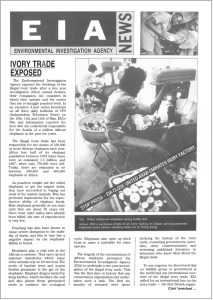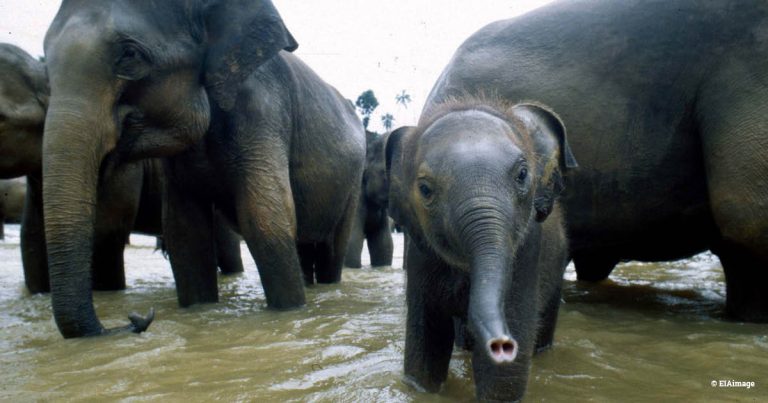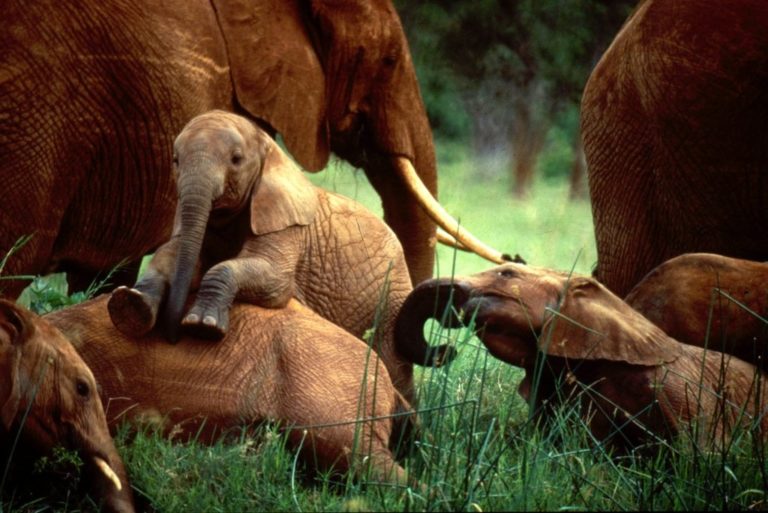In the countdown to EIA’s 40th anniversary later this year, we are featuring previous editions of our newsletter, highlighting our work exposing environmental crime and abuse.
We begin with this edition from 1989, detailing how we exposed the workings of the illegal ivory trade following a two-year investigation, naming dealers, their companies, the countries in which they operated and the routes they used to smuggle poached ivory. 
Our investigators went to the United Arab Emirates, where Chinese businessmen from Hong Kong had set up ivory factories to carve poached ivory smuggled out of Africa. We were able to secretly film one of the Dubai-based ivory factories and obtain evidence which detailed the amounts of poached ivory being imported into the UAE.
In May 1989, we went public with our findings in an exclusive three-part series of news bulletins broadcast on ITN in the UK.
Within four weeks of the launch of our campaign to save the African elephant, the UK, USA and much of Europe had announced immediate import bans on African elephant ivory.
A few months later, at the October 1989 meeting of the Convention on International Trade in Endangered Species (CITES), a ban on the international trade in African elephant ivory was agreed.
This historic decision to ban the ivory trade was supported by 76 nations, with only 11 opposing.
EIA Executive Director and Head of Elephant Campaign Mary Rice said: “The 1989 ban on international commercial trade in ivory has been instrumental in providing African elephants with a fighting chance for survival and to recover from decades of poaching, which continues to threaten elephants to this day. EIA’s groundbreaking investigations, such as the one that led to the 1989 ban, ensure that we continue to maintain the ban despite the efforts of the pro-trade lobby and we will continue our efforts to secure a future for
Read the full newsletter




